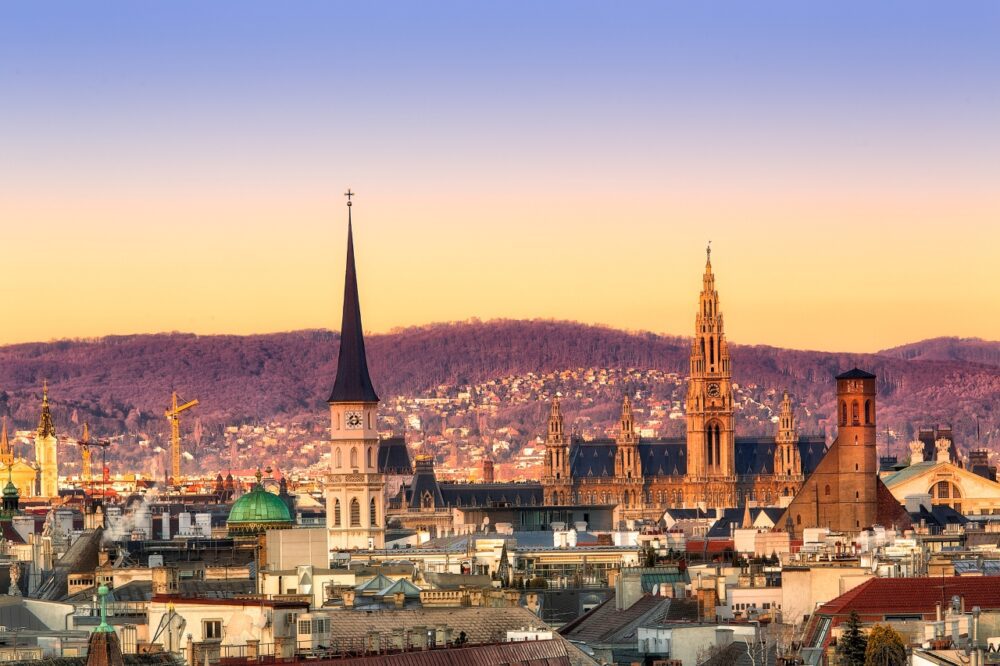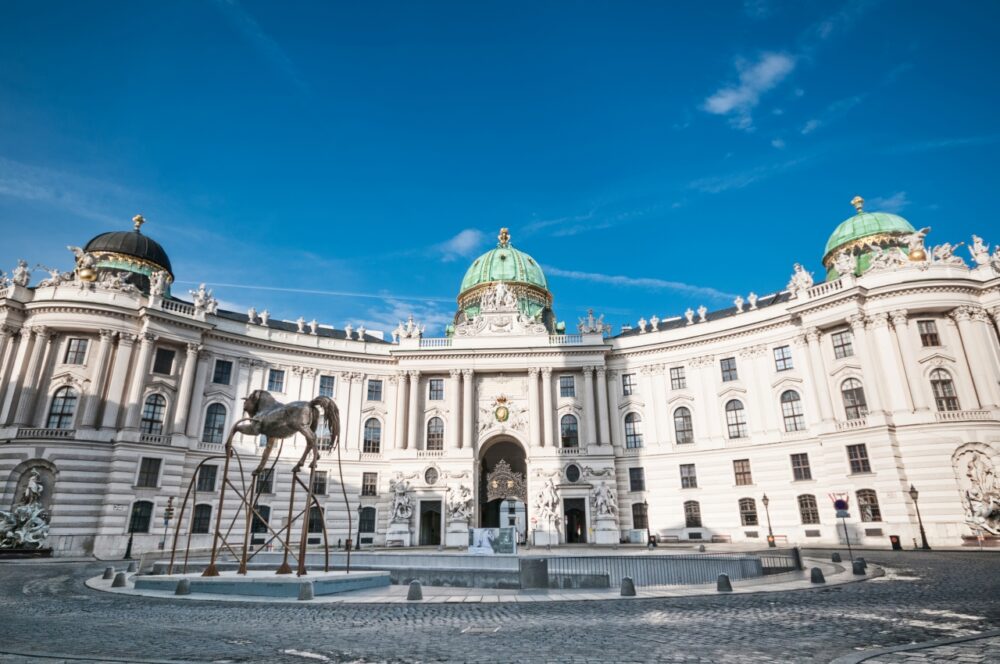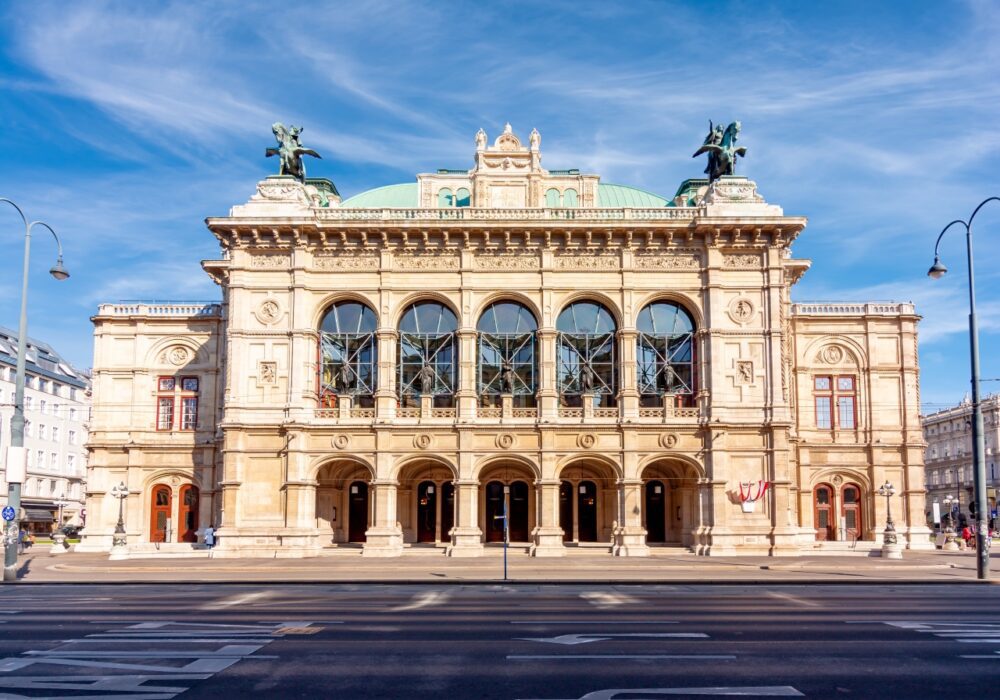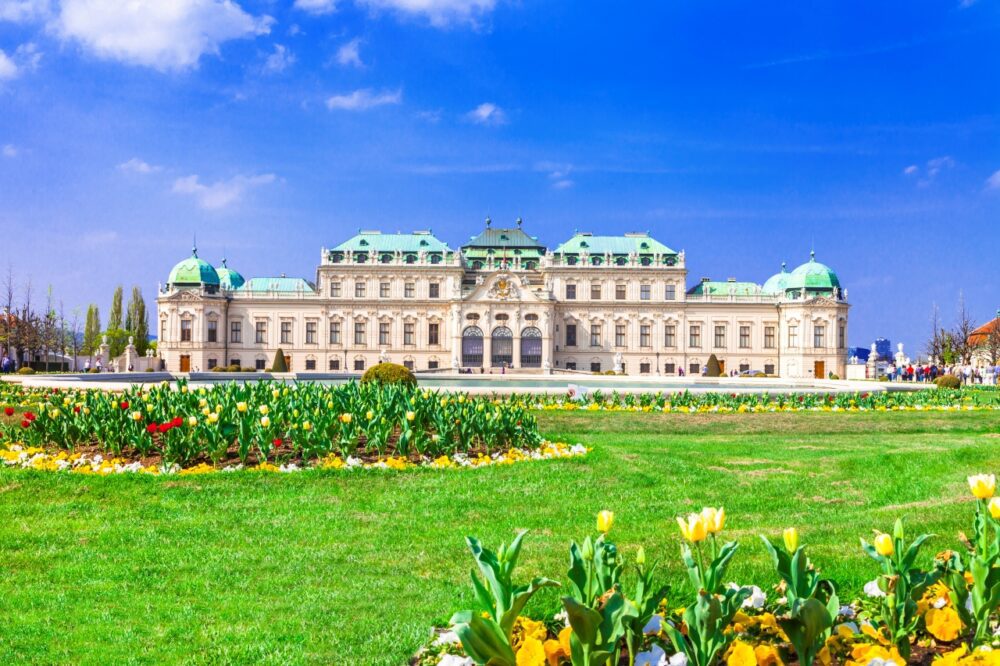
Is Vienna worth visiting? In my opinion, it absolutely is. From the moment I arrived, I was struck by Vienna’s elegance and its effortless ability to combine old-world charm with modern sophistication. Wandering through its grand boulevards, marvelling at Baroque architecture, and indulging in the café culture felt like stepping into a timeless masterpiece.
Located in the heart of Austria, Vienna is a city renowned for its imperial palaces, rich musical history, and refined culture. It was home to great composers like Mozart and Beethoven, who created some of their most famous works here, solidifying Vienna’s status as the classical music capital of the world. Landmarks like Schönbrunn Palace, St. Stephen’s Cathedral, and the Vienna State Opera make it a feast for the senses. But is Vienna worth visiting for you?
In this blog post, we’ll explore the top 10 reasons why Vienna should be your next destination, from its incredible cultural offerings to its hidden gems. Plus, I’ll share some travel tips to make your trip smooth and unforgettable. Whether you’re a history buff, a music lover, or someone who simply enjoys life’s finer things, Vienna promises to enchant you. Keep reading, and I’ll show you why.
Table of Contents
Pros – Reasons You Should Visit Vienna
1. A City with Breathtaking Architecture and Historic Charm

Vienna is one of Europe’s most visually stunning cities, with grand imperial palaces, elegant Baroque buildings, and beautifully preserved historic streets. Walking through the city feels like stepping back in time, with every corner showcasing impressive architecture that reflects its rich history as the capital of the Habsburg Empire. Unlike some cities where modern developments overshadow the past, Vienna has carefully preserved its heritage, creating an atmosphere of old-world elegance.
One of the highlights is Schönbrunn Palace, a magnificent 1,441-room Baroque palace that was once the summer residence of the Habsburgs. Exploring its opulent rooms and strolling through its vast gardens gave me a real sense of the grandeur of Austria’s royal past. The Hofburg Palace, another must-visit, offers an equally fascinating glimpse into imperial history, with the lavish apartments of Emperor Franz Joseph and Empress Elisabeth open to the public. Even outside the palaces, landmarks such as St. Stephen’s Cathedral, with its striking Gothic spire, and the Vienna State Opera, with its grand Renaissance façade, make every walk through the city an architectural delight.
2. A World-Class Cultural and Musical Scene

Vienna is often called the City of Music, and for good reason. It has been home to some of the greatest composers in history, including Mozart, Beethoven, and Strauss, and its musical heritage remains a key part of its identity. Whether you’re a classical music lover or just appreciate live performances, Vienna offers a cultural experience unlike anywhere else.
One of the most unforgettable experiences I had was attending a concert at the Musikverein, one of the world’s most famous concert halls. The acoustics were incredible, and listening to a full orchestra perform in such an elegant setting was something I’ll never forget. The Vienna State Opera is another highlight, offering world-class opera and ballet performances throughout the year. Even if you don’t attend a show, taking a guided tour of the opera house provides fascinating insights into its history and stunning architecture. Music is everywhere in Vienna, from street performances in the old town to the historic Haus der Musik, an interactive museum dedicated to Austria’s musical legacy.
3. A Coffeehouse Culture That Is Both Traditional and Welcoming
Vienna’s coffeehouse culture is an experience in itself, offering a unique blend of history, elegance, and relaxation. The city’s traditional cafés are not just places to grab a quick coffee—they are institutions where locals and visitors alike can spend hours enjoying rich coffee, delicious pastries, and the relaxed Viennese way of life. Unlike modern coffee chains, these historic cafés have a timeless charm, with marble-topped tables, chandeliers, and waiters in formal attire.
One of the best experiences I had was sitting in Café Central, a historic café once frequented by figures like Sigmund Freud and Leon Trotsky. The grand interior, with its high ceilings and elegant decor, made it feel like stepping into a different era. I ordered a Wiener Melange, a traditional Viennese coffee similar to a cappuccino, along with a slice of Sachertorte, Vienna’s famous chocolate cake. The experience of slowly enjoying coffee and cake while watching the world go by is something every visitor to Vienna should try. Other must-visit cafés include Café Sperl, Café Landtmann, and Café Demel, each offering a unique glimpse into Vienna’s long-standing coffeehouse tradition.
4. Some of the Best Museums and Art Galleries in Europe

Vienna is a paradise for art and history lovers, with a vast selection of world-class museums and galleries covering everything from classical masterpieces to modern art. The city’s museum district, MuseumsQuartier, is one of the largest cultural complexes in Europe, offering something for every taste and interest.
One of the most impressive collections is found at the Kunsthistorisches Museum, home to works by Rembrandt, Vermeer, Raphael, and Bruegel. The museum’s grand interior, with its marble staircases and gold-trimmed ceilings, is as much a masterpiece as the artworks inside. For those interested in more modern and experimental art, the Leopold Museum houses an excellent collection of Austrian artists, including Egon Schiele and Gustav Klimt. Klimt’s most famous painting, The Kiss, can be seen at the Belvedere Palace, another must-visit for art lovers. With so many museums and galleries, Vienna offers an endless cultural experience that can easily fill several days of exploration.
5. A Well-Connected and Efficient Public Transport System
Vienna has one of the best public transport systems in Europe, making it easy to get around the city without needing a car. The network includes trams, buses, underground (U-Bahn), and trains, all of which are clean, reliable, and well-integrated. Unlike some cities where getting from one place to another can be confusing, Vienna’s transport system is straightforward and efficient, allowing visitors to travel seamlessly between attractions.
I found the U-Bahn particularly convenient, as it runs frequently and covers all the major areas of the city. The trams were also a great way to see Vienna from a different perspective, especially the historic Ring Tram, which circles the city’s grand boulevard and passes many key landmarks. A single Vienna Travel Card gives unlimited access to public transport for a set period, making it a cost-effective way to explore. Whether travelling to Schönbrunn Palace, the Prater amusement park, or simply hopping between museums, the city’s transport system makes getting around incredibly easy.
6. Excellent Food, from Traditional Austrian Dishes to International Cuisine
Vienna’s food scene is a delightful mix of classic Austrian dishes, international influences, and high-quality ingredients. While many visitors come for the famous Wiener Schnitzel and Apfelstrudel, the city has much more to offer, from hearty meat dishes to elegant desserts and world-class wines.
One of my best meals was a Wiener Schnitzel at Figlmüller, a restaurant known for serving some of the best schnitzels in Vienna. The portion was enormous, with perfectly crispy breadcrumbs and tender veal inside. Another must-try is Tafelspitz, a traditional boiled beef dish served with horseradish and apple sauce. For dessert lovers, Kaiserschmarrn, a fluffy shredded pancake, is an absolute treat. Beyond Austrian cuisine, Vienna also has excellent Italian, Turkish, and Asian restaurants, making it a great destination for food lovers of all tastes.
7. A City That Feels Safe, Clean, and Well-Organised
Vienna consistently ranks as one of the most liveable cities in the world, and it’s easy to see why. The city feels incredibly safe, clean, and well-maintained, with a high standard of living that makes it a pleasure to explore. Unlike some major capitals where certain areas feel unsafe or chaotic, Vienna has a calm and orderly atmosphere that makes visitors feel at ease.
I found that even when walking through the city late at night, I never felt uncomfortable or unsafe. The streets were well-lit, the public transport was still running, and there was always a sense of order and security. The city’s cleanliness was also impressive—parks, streets, and public spaces were all well-maintained, adding to the overall enjoyment of the visit. Whether you’re travelling solo, as a couple, or with family, Vienna offers a stress-free and welcoming experience.
Cons – Things You Should Consider When Visiting Vienna
1. Vienna Can Be Expensive, Especially in Tourist Areas
Vienna is known for its elegance and high quality of life, but this comes at a price. Compared to other European capitals, it can be an expensive destination, particularly when it comes to accommodation, dining, and attractions. While there are budget-friendly options available, many of the city’s top hotels, restaurants, and cultural sites charge premium prices, which can make visiting Vienna costly for travellers on a tight budget.
I noticed this particularly when booking accommodation in the city centre. Hotels in and around Innere Stadt, where most of the main attractions are located, were significantly more expensive than similar options in other European cities. Even a simple coffee and cake in one of Vienna’s famous cafés could cost more than expected, with traditional spots like Café Central charging higher prices for the experience. Museum and palace entry fees also add up quickly, making it important to plan ahead and budget accordingly. While there are ways to save money, such as using public transport, eating at markets, or purchasing a Vienna Pass for discounted entry to attractions, Vienna is not the best choice for those looking for a low-cost city break.
2. The City Can Feel Formal and Reserved Compared to Other Capitals
Vienna is a city of refinement, tradition, and elegance, which gives it a unique character but can also make it feel formal and reserved compared to other major capitals. While the city is welcoming, it does not have the same lively or spontaneous energy as places like Berlin, Barcelona, or Budapest. The pace of life is slower, and the social atmosphere can sometimes feel a little more structured and less relaxed.
I noticed this especially when dining out or visiting traditional cafés. Service in some establishments, particularly historic restaurants and coffeehouses, can feel formal or even distant, with waiters maintaining a professional but sometimes detached manner. Unlike in Southern Europe, where staff often engage in friendly conversation, interactions in Vienna tend to be more reserved. While this is simply part of the city’s culture and not unfriendly by any means, it can take a little getting used to, especially for visitors accustomed to a more casual and outgoing social atmosphere.
3. The Weather Can Be Unpredictable and Winters Are Cold
Vienna experiences four distinct seasons, each offering a different experience, but the weather can sometimes be unpredictable. Summers can be hot and humid, with sudden thunderstorms, while winters are often cold, grey, and windy, making outdoor sightseeing less enjoyable. Spring and autumn generally have pleasant temperatures, but rain showers are common, meaning visitors should always be prepared for changing conditions.
I visited Vienna in late autumn, expecting mild weather, but was met with chilly winds and frequent rain, which made walking around the city less enjoyable. In winter, temperatures often drop below freezing, and while the Christmas markets add a magical touch, sightseeing in cold, damp conditions can be challenging. On the other hand, summer heatwaves can make some activities, like climbing the tower of St. Stephen’s Cathedral or exploring Schönbrunn Palace gardens, feel exhausting. If you’re planning a trip, it’s a good idea to check the forecast in advance and pack accordingly, as the weather can change quickly throughout the day.
4. Some Attractions and Restaurants Can Get Overcrowded
Vienna is one of Europe’s most visited cities, attracting millions of tourists each year, and during peak season, some of the most famous attractions can become extremely busy. The combination of large crowds and high demand can sometimes take away from the experience, making it harder to fully appreciate the beauty of the city’s landmarks.
I found this particularly noticeable at Schönbrunn Palace, where queues for tickets and entrance to the State Rooms were long, even early in the morning. Similarly, popular coffeehouses like Café Sacher often had long wait times, with tourists queuing outside just to try a slice of the famous Sachertorte. Museums and historic sites, such as the Hofburg Palace and Belvedere Palace, could also feel crowded, especially in summer when tour groups arrived in large numbers. If you want to avoid the crowds, visiting outside peak season, booking tickets online in advance, and exploring lesser-known areas of the city can make a big difference.
When to Visit Vienna
The best time to visit Vienna largely depends on your preference for weather and events. For many, the sweet spot is April to June or September to October. Spring and early autumn offer pleasant weather, fewer crowds, and a laid-back café culture that’s ideal for sightseeing without the summer rush. If you’re all about Christmas markets, though, late November to December is when Vienna transforms into a winter wonderland, with its squares lit up by thousands of twinkling lights and market stalls selling mulled wine and festive treats. Just bundle up—winters here can be chilly!
How to Get to Vienna
Vienna’s primary airport is Vienna International Airport (VIE), which is about 20 kilometres southeast of the city centre. Direct flights from major airlines like Austrian Airlines, Lufthansa, and British Airways make it easy to reach from across Europe. Once you land, getting to the city is a breeze. The City Airport Train (CAT) takes just 16 minutes to reach the city centre, or if you’re looking to save, hop on the S-Bahn (S7) commuter train for half the price. Taxis and ride-hailing services like Uber are also available, though pricier.
Where to Stay in Vienna
Vienna’s neighbourhoods each have their unique charm, so pick one that matches your travel style:
- Luxury: Innere Stadt – Stay in the heart of Vienna, surrounded by landmarks like St. Stephen’s Cathedral and Hofburg Palace. Hotels like the Hotel Sacher Vienna and The Ritz-Carlton Vienna provide lavish rooms with world-class amenities.
- Mid-range: Leopoldstadt – Close to Prater Park and the canal, this district is quieter but within easy reach of central Vienna. Look for options like Motel One Wien-Prater and Ruby Sofie Hotel.
- Budget: Mariahilf – Known for its shopping and food scene, this lively area has more affordable stays like Wombat’s City Hostel and Hotel Beethoven Vienna, just a short walk from the city centre.
Getting Around Vienna
Vienna has one of Europe’s most efficient and affordable public transport systems, so getting around is easy. The U-Bahn (underground), trams, and buses cover the entire city, with single tickets and 24-hour passes available. For a budget-friendly approach, get a Vienna City Card or 48-hour pass, which includes unlimited travel and discounts at major attractions. If you prefer to explore above ground, Citybike Vienna offers a bike-sharing programme with the first hour free. Walking is also pleasant, especially in the historic centre, where nearly every corner has a café or museum.
How Long to Spend in Vienna
For first-timers, three to four days in Vienna strikes a good balance. This allows enough time to explore the historic centre, take a tour of the Schönbrunn Palace, wander through Belvedere Palace, and sample the café culture Vienna is famous for. If you have more time, consider adding a day trip to the nearby Wachau Valley for wine tasting or Bratislava, which is only an hour away by train.
Conclusion
So, is Vienna worth visiting? Without a doubt. With its imperial palaces, classical music legacy, and world-famous café culture, Vienna is a city that combines sophistication and history like no other. While it’s true that it can be pricey and a bit formal, the city’s cultural treasures and timeless charm make it more than worth the visit. If you’re ready to step into a world of elegance and artistry, start planning your trip to Vienna today—you’ll be glad you did.
